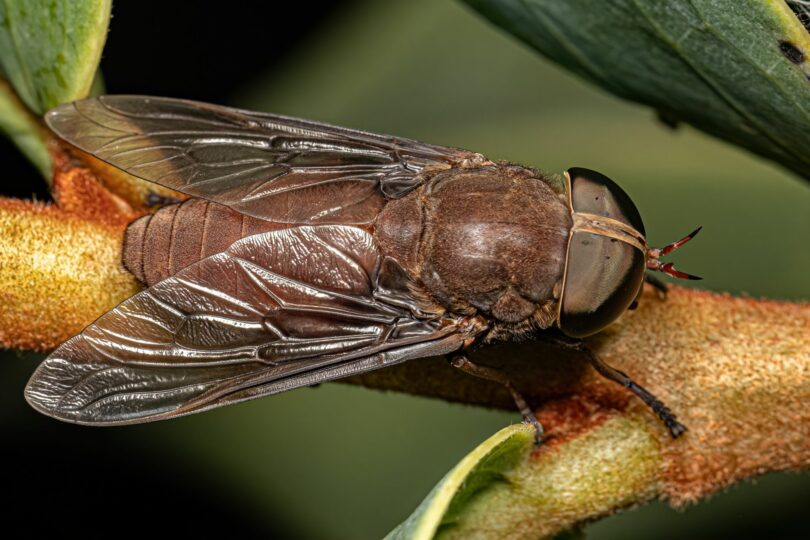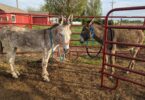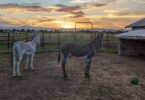Shoo Fly, Don’t Bother Me!
Horse flies can be one of the most annoying aspects of summertime at the barn. These pesky critters create trouble for horses and owners alike, and not just because their bites can be so painful. Let’s dive into the different types of flies that are common around horses and how to deal with them effectively.
There are four different types of flies common to horses: horse flies, stable flies, house flies, and deer flies. Adult flies live from between one week and two months. Only female flies bite because they need the protein found in blood to reproduce. In addition to being an annoyance, flies can transmit disease. Fortunately, there are various effective strategies for fighting off flies.
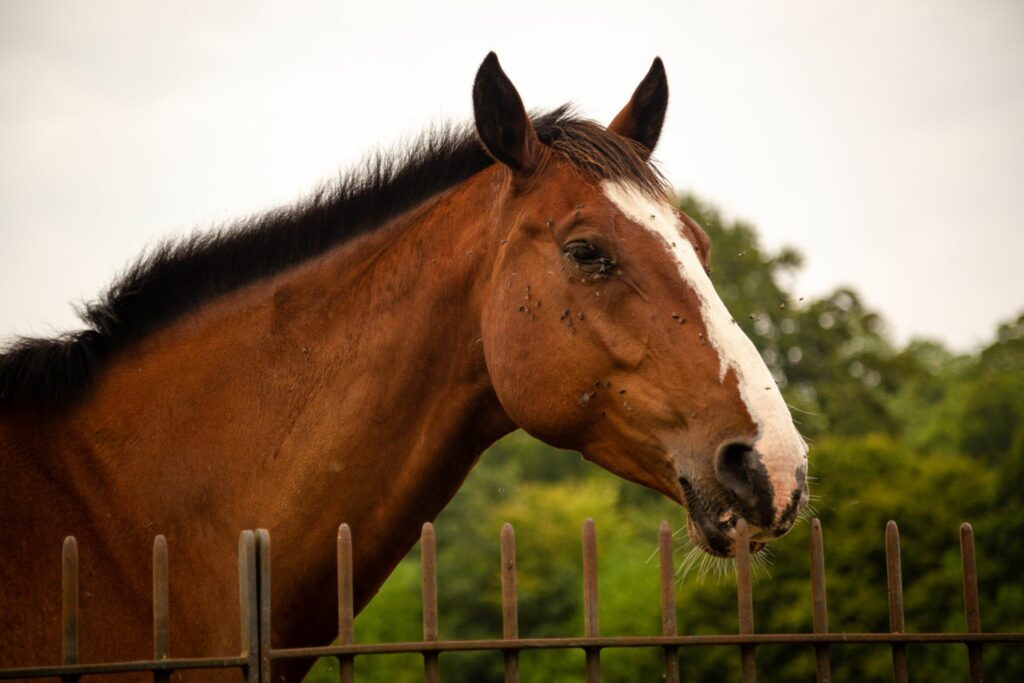
Source: Canva
Horse Flies
While several different types of flies are commonly found around horses, horse flies are the most notorious. A single bite from one of these can get your normally chill horse kicking and bucking like he’s at the rodeo!
Types of Flies Common to Horses
There are four main types of flies that are commonly found around horses.
Horse flies
Scientific name: Tabanidae
Size: Horse flies can be anywhere from ¾ to 1 ¼ inches long.
Facts: Their wings can be either clear or solidly colored, but their eyes are always brightly colored. They are only active during the day.
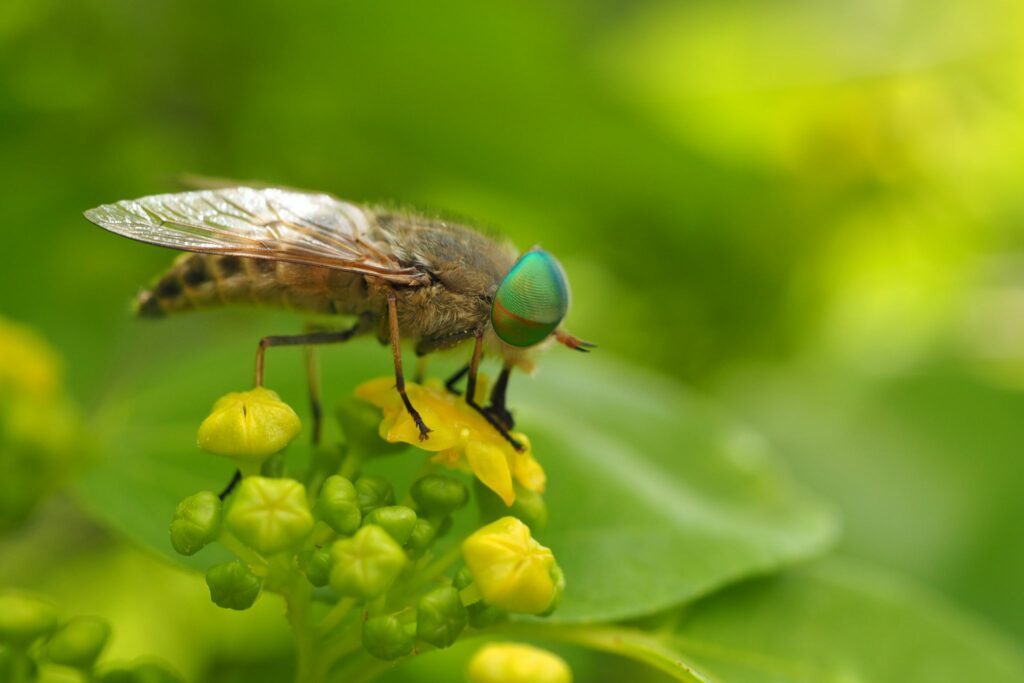
Source: Canva
Stable flies
Scientific name: Stomoxys calcitrans
Size: Stable flies are about ¼ inch long.
Facts: Very similar to the house fly, stable flies are differentiated by the seven black spots on their abdomens. About 5% of the population will be on a horse at any given time; the other 95% perch nearby on plants or fences.
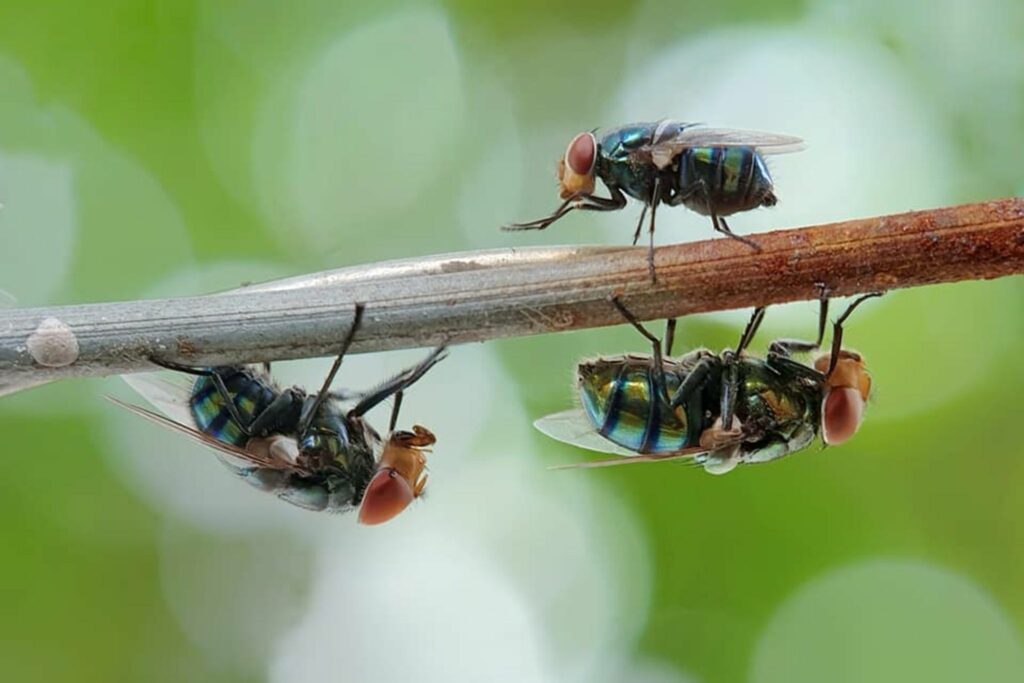
Source: Canva
House flies
Scientific name: Musca domestica
Size: House flies are about ¼ inch long.
Facts: While annoying, these flies don’t bite animals. They cause trouble because they spread fecal bacteria. They love fresh manure!
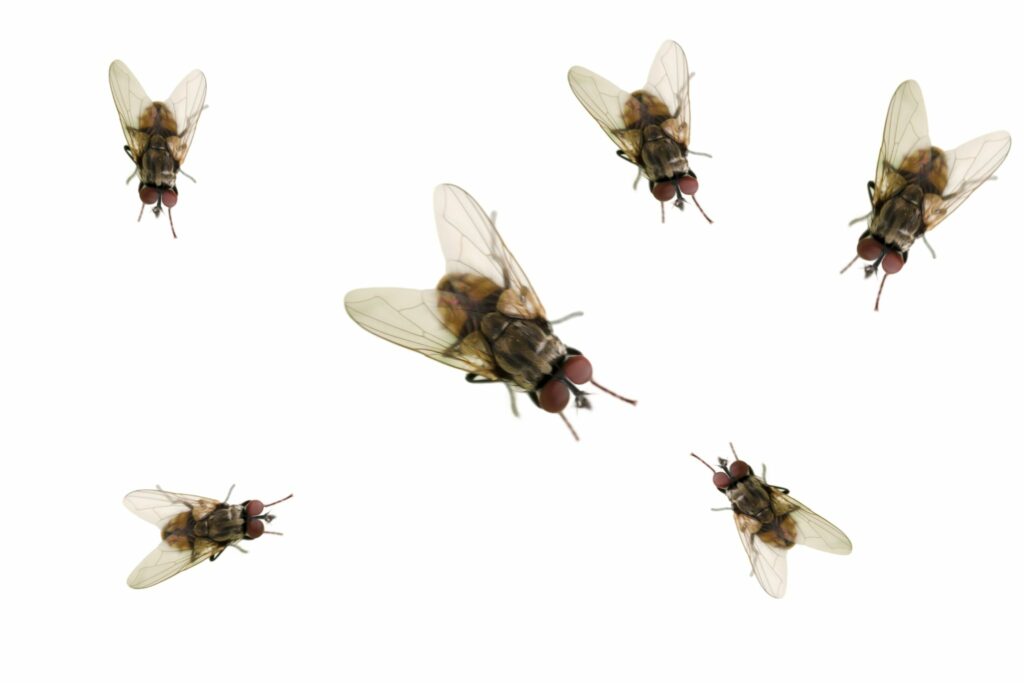
Source: Canva
Deer flies
Scientific name: Chrysopsinae
Size: Deer flies can range from ¼ to 1 ¼ inches long
Facts: These flies will bite humans as often as horses and tend to be most active in and around swampy areas. They are only active during the day.
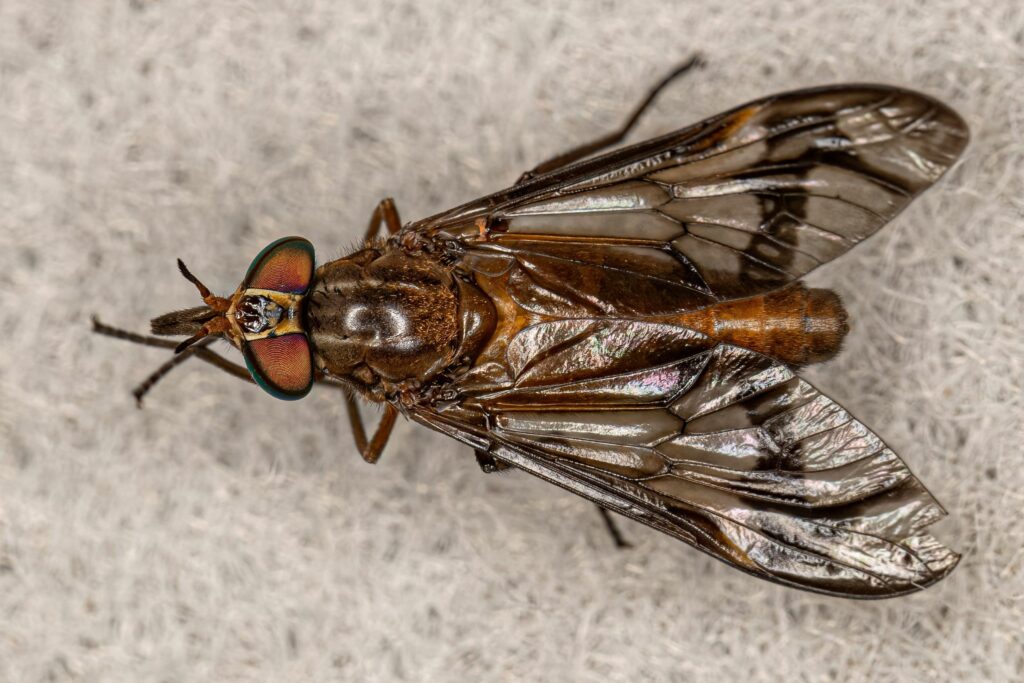
Source: Canva
Fly Life Cycle
Stable flies and house flies have similar life cycles. Adult females lay about one hundred eggs every few days. These eggs hatch into maggots, which feed on bacteria that grow in debris (like manure).
Maggots become pupae, then winged adults, which can live for one to three weeks, depending on the weather.
Horse flies and deer flies lay hundreds of eggs at a time and have a larval stage that can last up to one year. The larvae then pupate for one to two weeks, becoming pupae. From there, they take three to ten weeks to develop into adults.
On average, adults live for thirty to sixty days.
Biting Fly Facts
Biting flies, which include deer flies, horse flies, and stable flies, need to feed on blood to reproduce. This means only the females of these species actually bite. The male flies actually live off of nectar and pollen.
Horse fly bites in particular can be very painful, leaving behind swelling and even bruises.
After-effects include a burning sensation or itchiness. Fortunately, horse fly bites rarely cause long-term issues for humans. However, horse flies can transmit equine infectious anemia to horses, which can be fatal.
Dangers of Flies
Aside from transmitting diseases and leaving behind painful bite marks, flies can also cause allergic reactions and are a general nuisance. (Have you ever seen a horse run itself to exhaustion trying to escape flies?)
Flies can also cause hives, intense itching, hair loss, and skin abrasions in horses.
Fly Attractants
Flies are attracted to many things.
Fun fact: Horse flies are most attracted to large, dark, and warm moving objects (like horses). This is why dark horses may be more bothered than lighter horses, and why fly sheets are usually light in color.
Manure
Flies LOVE manure, and for good reason. They need someplace moist and warm to lay their eggs that can also offer nutritious bacteria for those eggs to feed on once they hatch. Manure offers flies all three of these things.
This is why it’s important to stay on top of manure management, especially in the summer, and to keep manure away from the barn and turnouts.
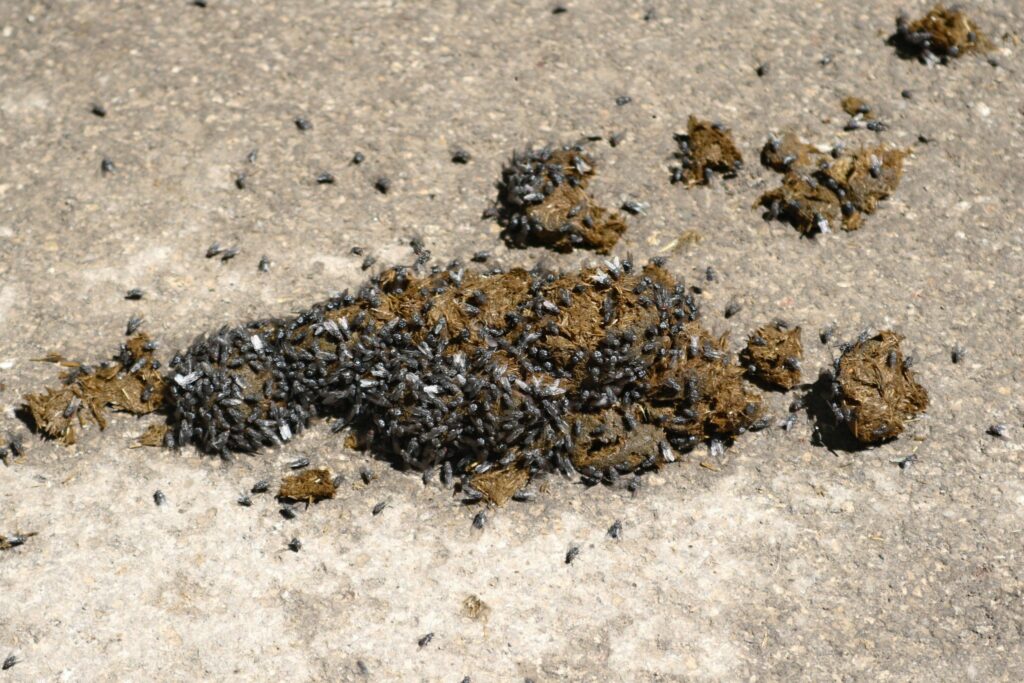
Source: Canva
Color
Flies are also more attracted to certain colors. Dark colors are their favorites, with some species particularly liking blue tones. Many flies seem to be repulsed by yellow and lighter colors in general.
Movement
Flies are also attracted to movement, which can make running away ineffective.
Fun (or not…) Fact: Horse flies have been known to chase their prey for several miles.
Carbon Dioxide
It may come as a surprise that flies are attracted to carbon dioxide, which we (and our horses) breathe out more heavily when working. Scientists believe that flies use carbon dioxide to find living hosts they can feed off.
Fly Repellants
Fortunately, there are many ways to manage flies, including the use of fly repellants. Fly repellant is a broad term which can include things like insecticides, fly sprays, fly predators, and even fly supplements.
Fly Sprays
There are dozens of fly sprays that you can buy. Some use a range of chemicals while others make use of natural ingredients (including scents that flies can’t stand). You can even make fly spray at home.
The simplest fly spray is apple cider vinegar (you can dilute it 50/50 if you or your horse are sensitive to it). You can also make fly spray using mineral oil, apple cider vinegar, liquid dish soap, and essential oils.
Common essential oil choices include rosemary, lavender, citronella, peppermint, and lemon grass.
Fly Predators
If you don’t want to control flies through chemicals, fly predators are a great option. Fly predators are actually just smaller flies that eat the pupae of biting flies, preventing future generations. These insects don’t bite or sting. This method requires a farm-wide approach, with new fly predators added every three to four weeks.
How many fly predators you need will vary based on the number of horses on the property.
For example, a barn with one to five horses would need 7,500 fly predators every three weeks, and a barn with twenty to twenty-five horses would need 10,000 fly predators every week.
If you live in close proximity to other large animals, fly predators may not be an effective solution, as flies can easily travel short distances.

Source: Canva
Fly Supplements
Another option is to use a fly supplement. These supplements work by affecting your horse’s manure and making it difficult (if not impossible) for the maggots to feed effectively on it, causing them to die before they mature and can reproduce.
These types of supplements must be fed DAILY and work best when every horse in the barn is on them.
When used correctly, they can reduce the need for daily fly spray application. However since flies can travel several miles, you’ll probably still need the spray for trail rides or if you have equine neighbors in close proximity.
How To Get Rid of Horse Flies
While horse flies can’t be completely eliminated, it’s possible to significantly reduce their presence and impact. A combination of preventative measures and elimination techniques works best.
- Eliminate standing water
- Keep your barn free of manure
- Pick paddocks and pastures regularly
- Store manure away from the barn and turnouts
- Hang horsefly traps
- Use fly spray
- Spray the barn and stalls with a combination of ACV and essential oils
- Use a fly supplement
- Use fly predators
- Cover dark horses with light-colored fly sheets
Temporary Solutions
Temporary solutions take care of flies once they are adults but don’t necessarily impact the breeding cycle and prevent new flies from appearing.
A few options include fly traps or fly paper, an application of insecticides, and fly spray.
You can also outfit your horse in fly protective gear. Be sure to size correctly to ensure a proper fit! Too large and these options won’t stay in place—too small and you can cause rubbing, hair loss, and even sores.
- Fly masks
- Fly sheets
- Fly leg wraps
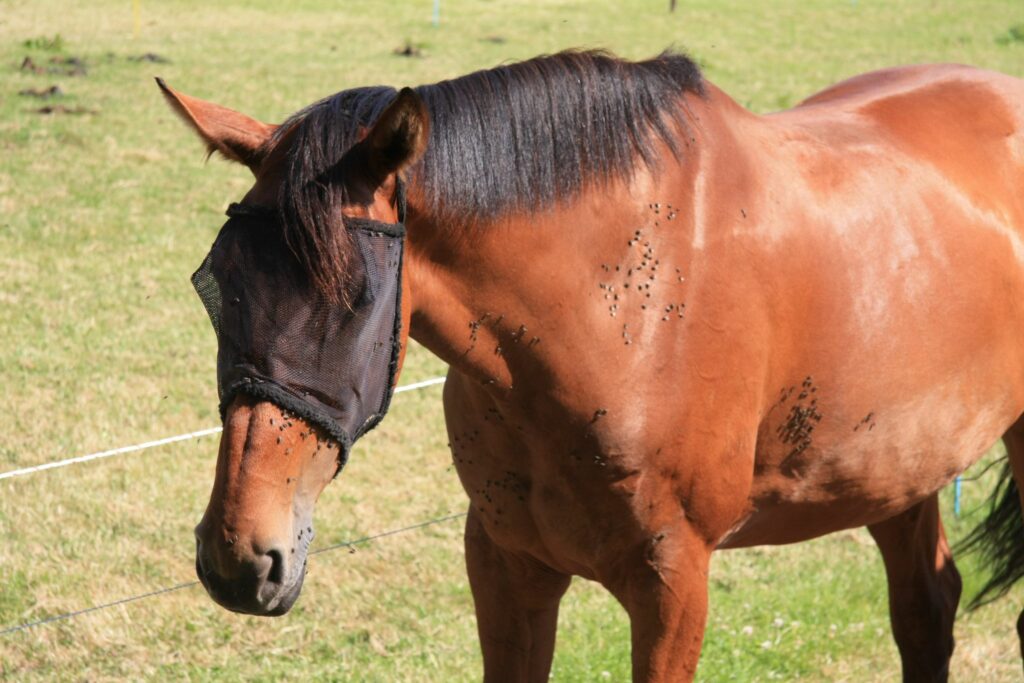
Source: Canva
Long-Term Solutions
Long-term solutions address the fly problem at its source by interrupting the breeding cycle and allowing fewer maggots the chance to mature. These solutions are the most effective at producing long-term (or permanent) results.
A few options include fly predators (which feed on pupae), fly supplements (which deprive maggots and pupae of nutrients, preventing them from maturing), and proper barn management (including keeping barns free of manure, eliminating damp or spoiled hay, and eliminating any sources of standing water).
Frequently Asked Questions
Q: What keeps horse flies away?
Horse flies HATE the smell of citronella, so burning a citronella candle can help keep them away. (NEVER light a candle in the barn). Creating a homemade fly spray with apple cider vinegar, olive oil, and citronella oil is also a great horse fly deterrent.
It also helps to eliminate manure, as it’s a popular place for females to lay their eggs and provides the nutrients maggots need to mature into adult horse flies.
Light-colored or zebra-patterned fly sheets are also an amazing fly deterrent. They don’t like lighter colors, and something about the stripes of a zebra confuses flies and makes it difficult for them to land.
Q: What attracts horse flies to bite?
Female horse flies bite because they need the protein found in blood to grow eggs. They are attracted to warmth, dark colors, and movement (which is why horses are a popular target). Horse flies are also attracted to carbon dioxide, but we don’t recommend holding your breath.
If you’re going for a ride, wear light colors like white or yellow and apply an ample coating of fly spray to your horse. Make sure to cover every inch of your horse, as horse flies will land anywhere that’s unprotected.
Q: How harmful are horse flies?
Aside from their painful bite, horse flies generally aren’t harmful to humans. However, horse flies can transmit equine infectious anemia (better known as swamp fever) to horses, which can be fatal. A bite from a horse fly is also painful for your horse and can cause them to act out, possibly hurting you in the process.
Q: What is a natural predator for horse flies?
Fortunately, horse flies have a LOT of predators that help reduce their numbers. Birds have been known to eat both adults and larvae, while insects like wasps and nematodes will eat larvae and pupae. This is why fly predators can be a very effective method to control and reduce the horse fly population in your barn. The best part? Fly predators are tiny and won’t bother horses or humans.
Q: Why would you get horse flies in your house all of the sudden?
Like other types of flies, horse flies are also attracted to decaying matter. If something is rotting in your house, horse flies will be attracted to it. The most common culprits are garbage disposals and garbage cans. If you have a pool in your yard, the horse flies may also be attracted to that and end up inside accidentally.
Q: How do horse flies get in your house in winter?
Horse flies look for places to stay out of the wind and stay warm, which can lead them to find gaps and cracks in your house. The most common locations you’ll find them include attics, basements, or behind the walls. They most often get in through cracks in the baseboards or through gaps in windows or door trims.
Q: When do horse flies die off?
Horse flies are most active from May through September. They start to die off once the weather gets cooler (they need warm weather to survive).
Q: What is the horse fly’s order?
Horse flies and deer flies are flies from the family Tabanidae and the insect order Diptera.

Source: Canva
Parting Thoughts
Horse flies are something that every rider and barn owner dreads. They can be a real nuisance, especially when you’re trying to have a quiet ride in the summertime.
Fortunately, there are several measures you can take to deter horse flies and reduce their population. Don’t feel bad about hitting them hard and fast–your horse will thank you for saving him from a painful bite!
P.S. Enjoy this article? Trot on over to:
- Which Herbs & Vegetables to Feed Your Horse (And Why)
- Shoo Fly, Won’t Bother Me: 14 Best Horse Fly Sheets
- Fly Free: 14 Best Horse Fly Sprays
- Manure Management Made Simple for Horse Rookies
- Horse Care for the Total Beginner–You CAN Do This!
- 3 Best Sunscreens for Sensitive Horse Snoots
- Roll With It: Why Does My Horse Roll Around?
Sources
Horse Flies and Deer Flies | Entomology (uky.edu)
Fly control around horses (umn.edu)

